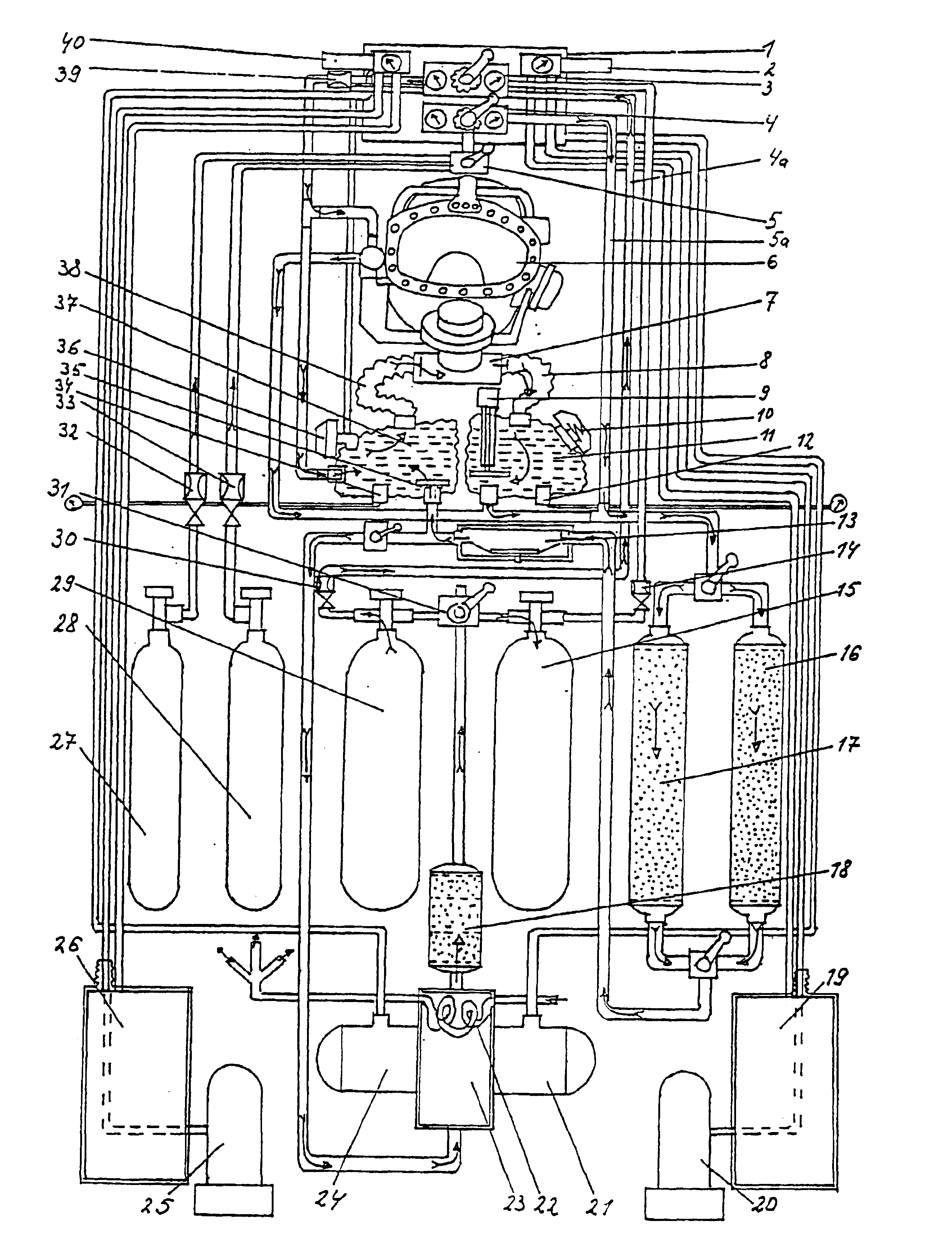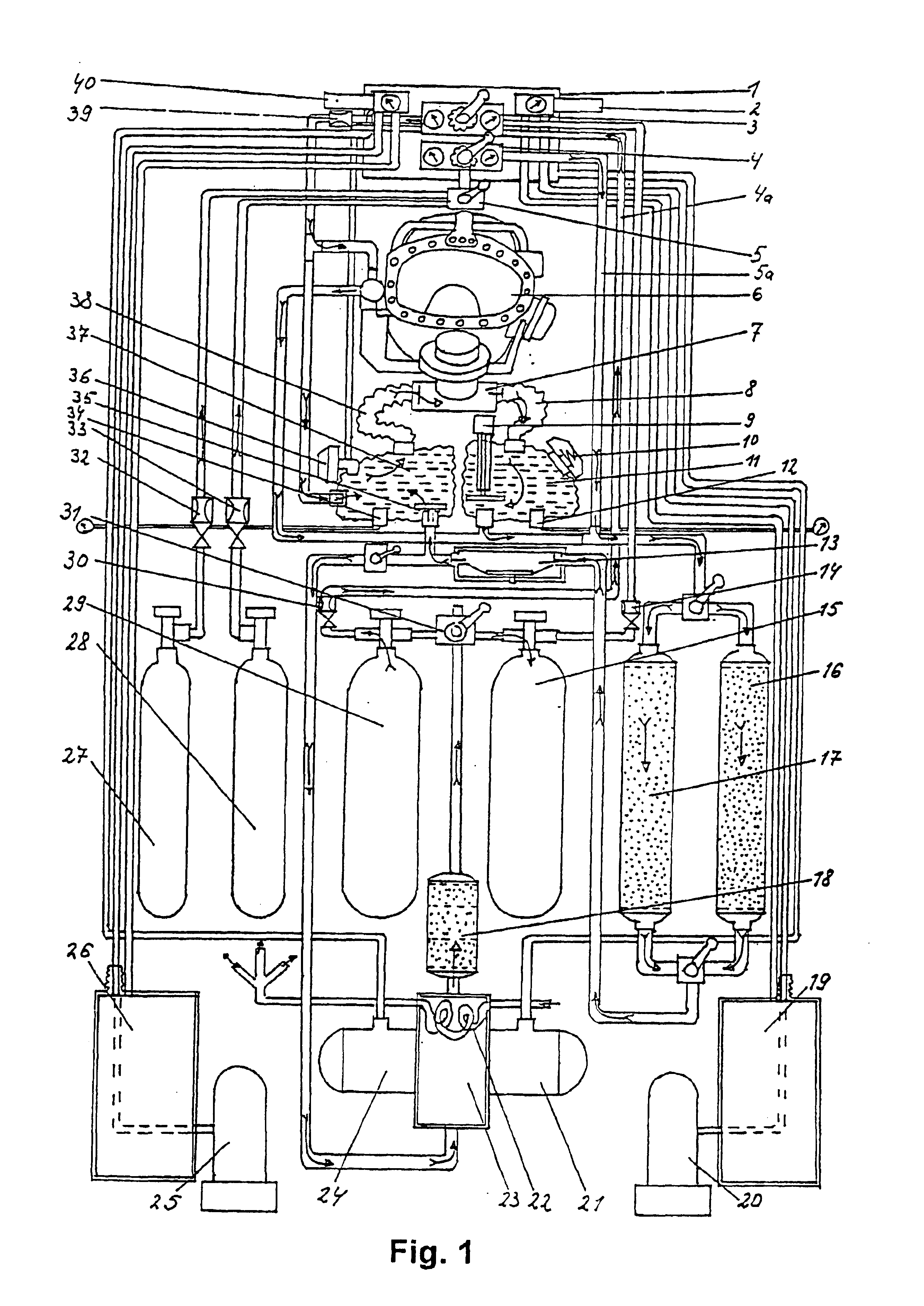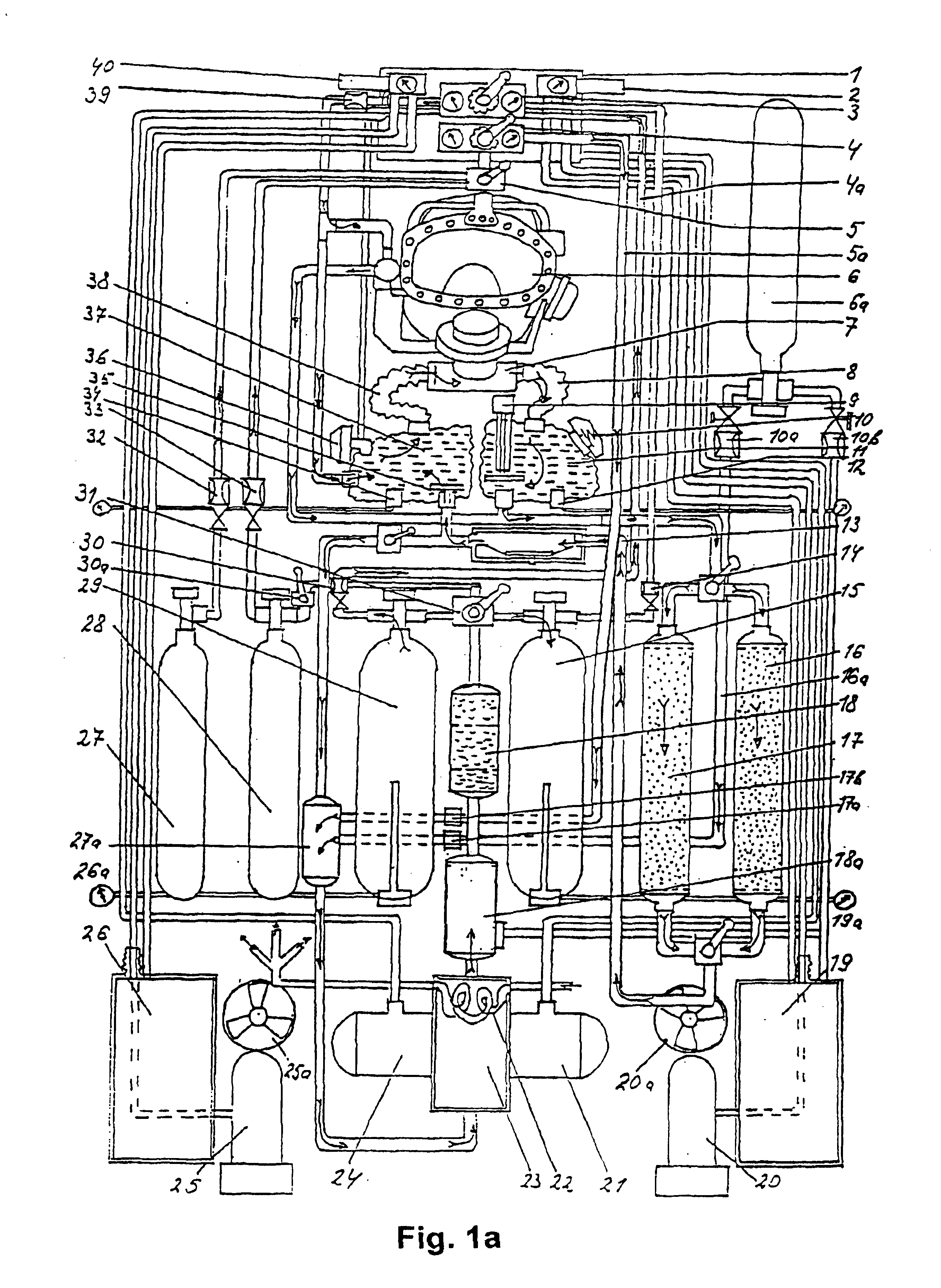Method and device for the autonomous production, preparation, and supply of breathing gas to divers at extreme depths
a technology of breathing gas and production method, applied in the direction of breathing protection, underwater equipment, adsorption, etc., can solve the problems of enhancing the risk of co2 or o2 intoxication, and the use of self-mixing closed-circuit rebreather (ccr) is almost impossible, so as to enhance diving safety
- Summary
- Abstract
- Description
- Claims
- Application Information
AI Technical Summary
Benefits of technology
Problems solved by technology
Method used
Image
Examples
Embodiment Construction
[0028]The operational principle of the method and the autonomous back-worn diving rebreather implementing it are shown in greater detail in FIG. 1.
[0029]According to a first exemplary embodiment, illustrated by FIG. 1, the pressurized containainer (a steel bottle with mixed gas) (29), the gas flows out through the open valve and the high-pressure connection to the one-stage pressure reductor (30) for being reduced to above-crucial pressure up to 110 bar, depending on the diving depth. Then, through the dozing nozzle (39), the gas heads for inhalation bag (37) or directly to diving helmet (6) from where it reaches the respiratory organs of the diver.
[0030]During the exhaling phase, the gas flows backward through exhalation bag (11) or directly from diving helmet (6) into the two absorption filters (16, 17), from where it is drawned into by the low-pressure membrane pump (13), and through non-return valve (35) it flows into inhalation bag (37) again. Thus, the circuit is closed. The l...
PUM
 Login to View More
Login to View More Abstract
Description
Claims
Application Information
 Login to View More
Login to View More - R&D
- Intellectual Property
- Life Sciences
- Materials
- Tech Scout
- Unparalleled Data Quality
- Higher Quality Content
- 60% Fewer Hallucinations
Browse by: Latest US Patents, China's latest patents, Technical Efficacy Thesaurus, Application Domain, Technology Topic, Popular Technical Reports.
© 2025 PatSnap. All rights reserved.Legal|Privacy policy|Modern Slavery Act Transparency Statement|Sitemap|About US| Contact US: help@patsnap.com



